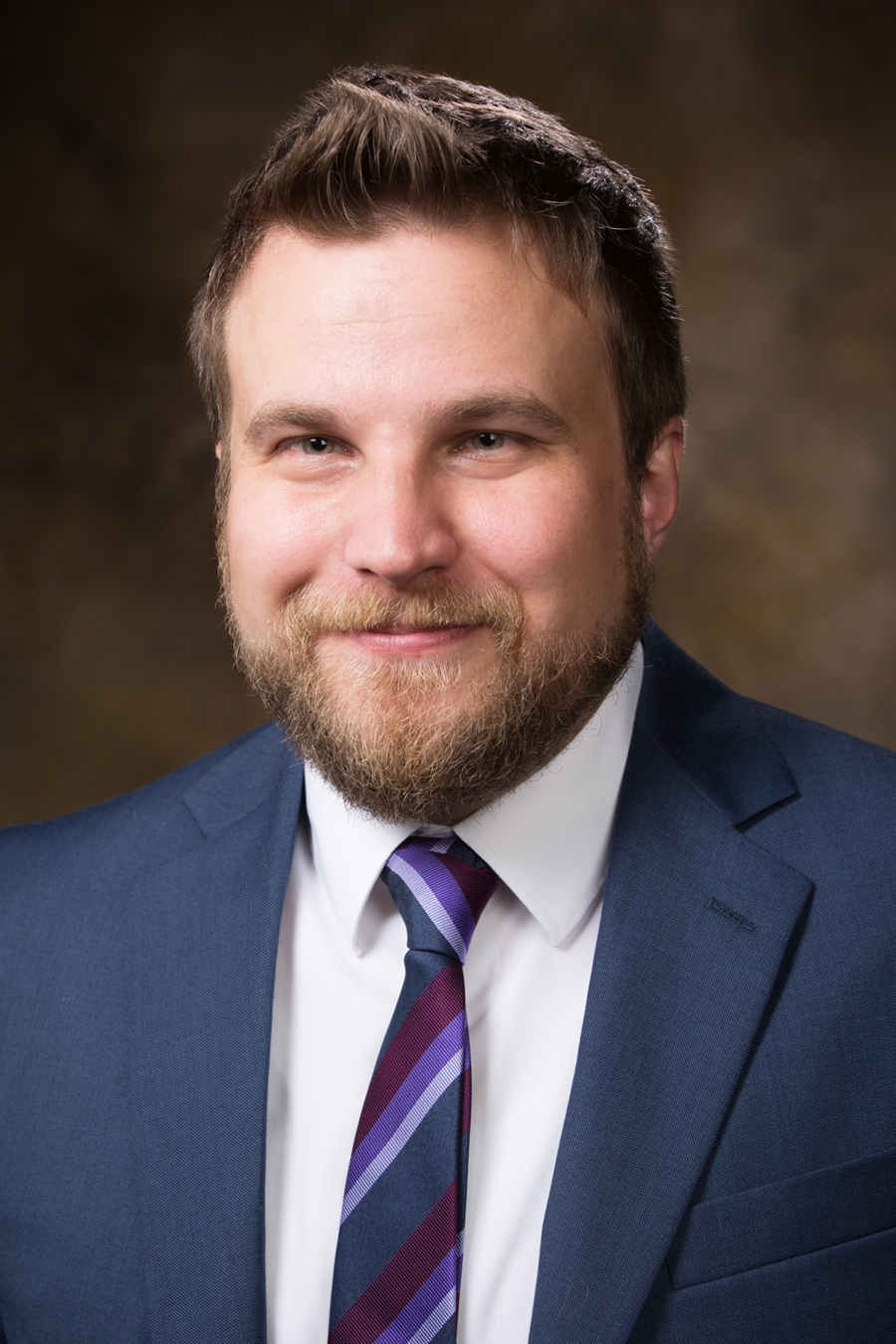New Study Shows Tissue Healing Response Following a Heart Attack
FAYETTEVILLE, Ark. – In the weeks following a heart attack, the injured heart wall acquires more collagen fibers that are significantly less stiff due to a lack of fiber crosslinks, according to a new study by a University of Arkansas researcher and his colleagues at Tufts University. The changes to the cardiac tissue may lead to excessive scar formation and ultimately heart failure.
The discovery was made by a team that included Kyle Quinn, assistant professor of biomedical engineering at the U of A, and Irene Georgakoudi and Lauren Black, associate professors of biomedical engineering Tufts. Their findings were published in Nature Publishing Group's Scientific Reports.
Using multiphoton microscopy, a powerful imaging technique, the researchers examined changes in composition and mechanical properties of the heart wall in the weeks following a heart attack. Through a process of tissue decellularization, they studied the fiborous load-bearing microstructure around cardiac cells and found that following a heart attack the newly-forming scar tissue was made up of collagen fibers that were thinner, less naturally fluorescent, and more aligned than in healthy tissue. These fiber properties measured with multiphoton microscopy were associated with a poor mechanical response compared to healthy cardiac tissue.
"With multiphoton microscopy, we can visualize both collagen fiber organization and crosslinking status," Quinn said. "Clearly, after a heart attack, the extra-cellular matrix was less stiff due to the deposition of new collagen fibers that lacked crosslinks."
The ability to predict the mechanical environment of the heart wall through these imaging techniques may help researchers understand how scarring, after a heart attack can ultimately lead to heart failure, Quinn said. Quinn will continue working on the quantitative imaging methods to understand the relationship between the structure and mechanical function of biological tissues. His goal is to apply these methods to problems with skin and wound healing.
"Our skin shares many similar characteristics with the heart in its healing response following an ischemic injury," Quinn said.
Topics
Contacts
Kyle Quinn, assistant professor
Department of Biomedical Engineering
479-575-5364,
kpquinn@uark.edu
Matt McGowan, science and research communications officer
University Relations
479-575-4246,
dmcgowa@uark.edu
Headlines
PetSmart CEO J.K. Symancyk to Speak at Walton College Commencement
J.K. Symancyk is an alumnus of the Sam M. Walton College of Business and serves on the Dean’s Executive Advisory Board.
Faulkner Center, Arkansas PBS Partner to Screen Documentary 'Gospel'
The Faulkner Performing Arts Center will host a screening of Gospel, a documentary exploring the origin of Black spirituality through sermon and song, in partnership with Arkansas PBS at 7:30 p.m. Thursday, May 2.
UAPD Officers Mills and Edwards Honored With New Roles
Veterans of the U of A Police Department, Matt Mills has been promoted to assistant chief, and Crandall Edwards has been promoted to administrative captain.
Community Design Center's Greenway Urbanism Project Wins LIV Hospitality Design Award
"Greenway Urbanism" is one of six urban strategies proposed under the Framework Plan for Cherokee Village, a project that received funding through an Our Town grant from the National Endowment for the Arts.
Spring Bike Drive Refurbishes Old Bikes for New Students
All donated bikes will be given to Pedal It Forward, a local nonprofit that will refurbish your bike and return it to the U of A campus to be gifted to a student in need. Hundreds of students have already benefited.





